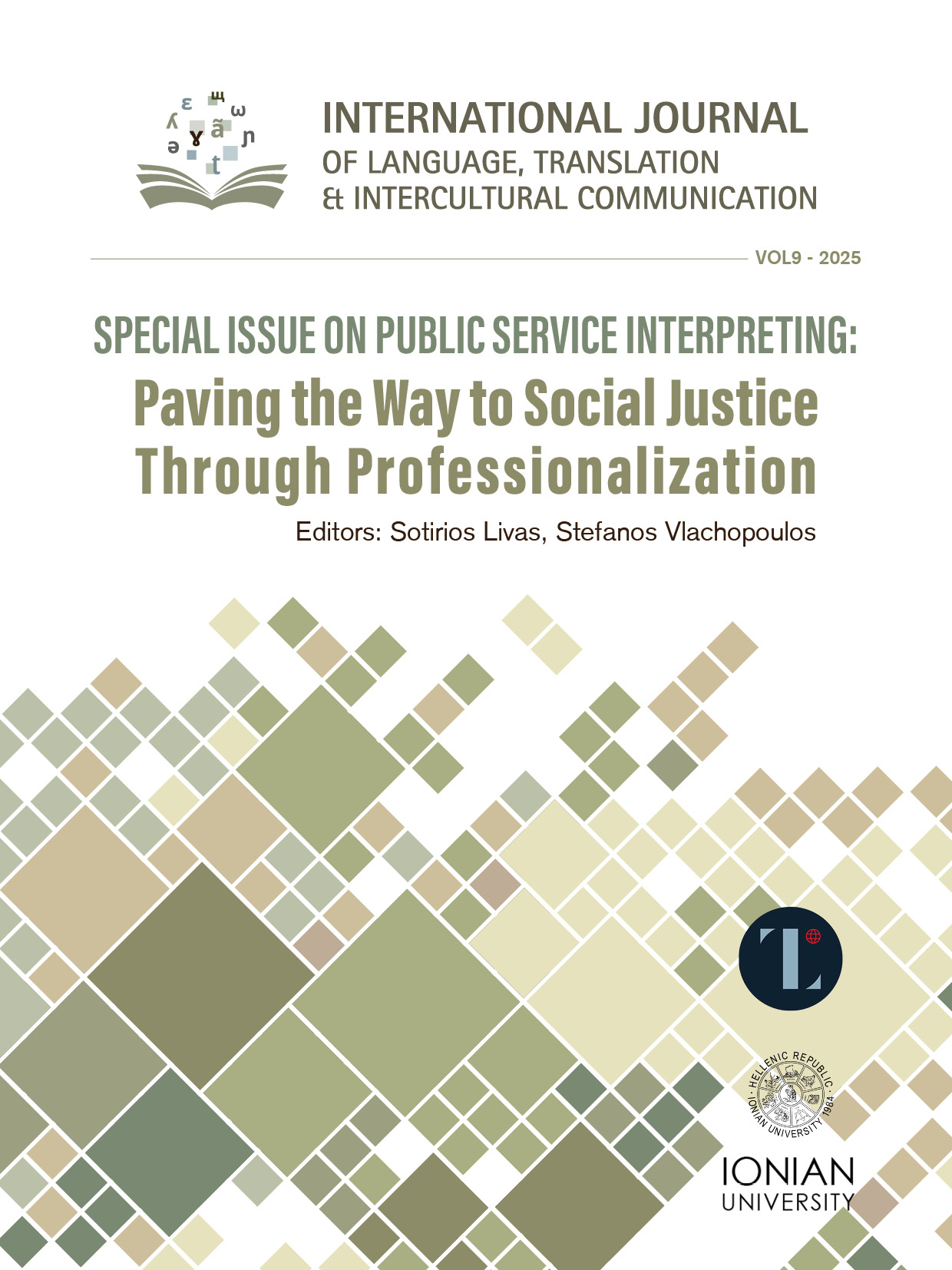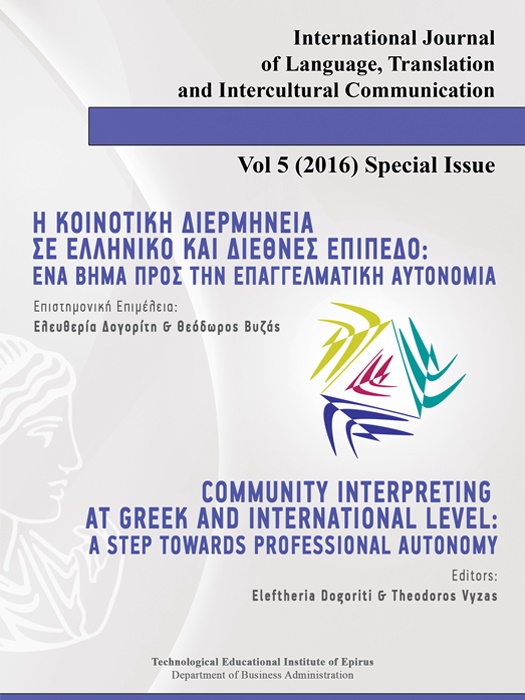Interpreting for Public Services and the Community Towards conceptual accuracy and terminological stability

Abstract
The aim of this article is to show that interpreting in public services is a highly important and demanding social and institutional interaction, and must be distinguished from community interpreting, which means that the term public service interpreting must be used in its own right.
The theoretical framework will comprise the interactionistic model (Wadensjö 1995) and Marianacci’s model (2022) of power asymmetries between public service professionals and “clients” in institutional context. Major features of interpreting such as accuracy, fidelity, impartiality and neutrality will be approached while pragmatic and socio-cultural aspects will also be discussed. Emphasis will be placed on public service settings and the power asymmetries they generate. As public service interpreting helps to balance power relations, it is indispensable to social justice, thus it must be conducted by professional interpreters.
Article Details
- How to Cite
-
Vyzas, T. (2025). Interpreting for Public Services and the Community: Towards conceptual accuracy and terminological stability. International Journal of Language, Translation and Intercultural Communication, 9. https://doi.org/10.12681/ijltic.39033
- Section
- Articles

This work is licensed under a Creative Commons Attribution-NonCommercial-ShareAlike 4.0 International License.
Copyright Notice
Authors who publish with this journal agree to the following terms:
- Authors retain copyright and grant the journal right of first publication with the work simultaneously licensed under a Creative Commons Attribution License that allows others to share the work with an acknowledgement of the work's authorship and initial publication in this journal.
- Authors are able to enter into separate, additional contractual arrangements for the non-exclusive distribution of the journal's published version of the work (e.g., post it to an institutional repository or publish it in a book), with an acknowledgement of its initial publication in this journal.
- Authors are permitted and encouraged to post their work online (e.g., in institutional repositories or on their website) prior to and during the submission process, as it can lead to productive exchanges, as well as earlier and greater citation of published work (See The Effect of Open Access).



